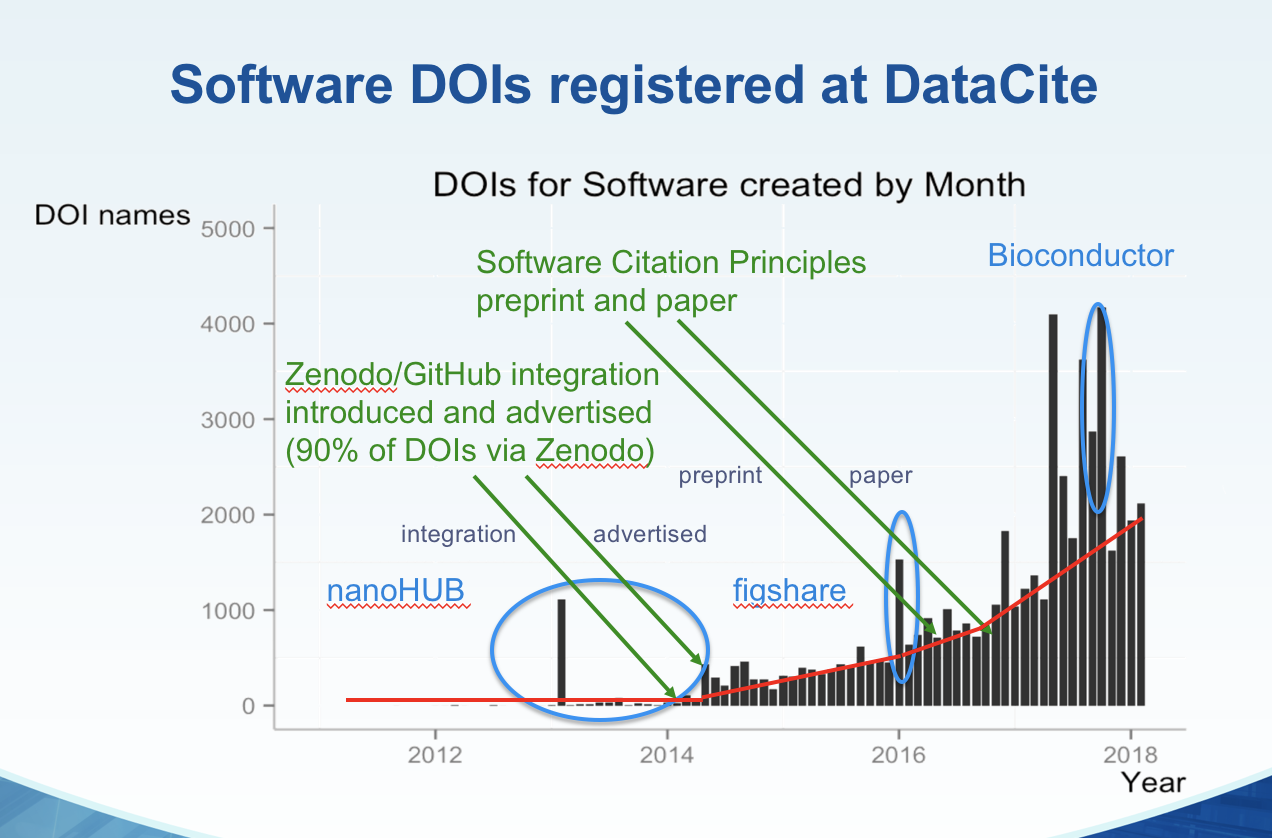
We know that software is important in research, and some of us in the scholarly communications community, for example, in FORCE11, have been pushing the concept of software citation as a method to allow software developers and maintainers to get academic credit for their work: software releases are published and assigned DOIs, and software users then cite these releases when they publish research that uses the software.